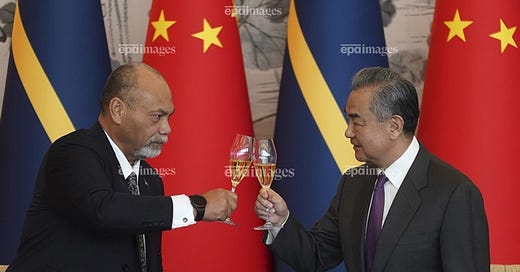China's Pacific Influence Riles Global Response
China’s increasing political influence in the south Pacific has sparked an international response, Taiwan spots a record 8 balloons from mainland China ahead of Lunar New Year
UPDATES: Taiwan elected Lai Ching-te, also known as William Lai, to be its next president on January 13. His election marks the continuation of a government that promotes an independent Taiwan.
Just two days later, the Pacific nation of Nauru severed ties with Taiwan and transferred its diplomatic allegiance to Beijing.
A record eight mainland Chinese bal…




